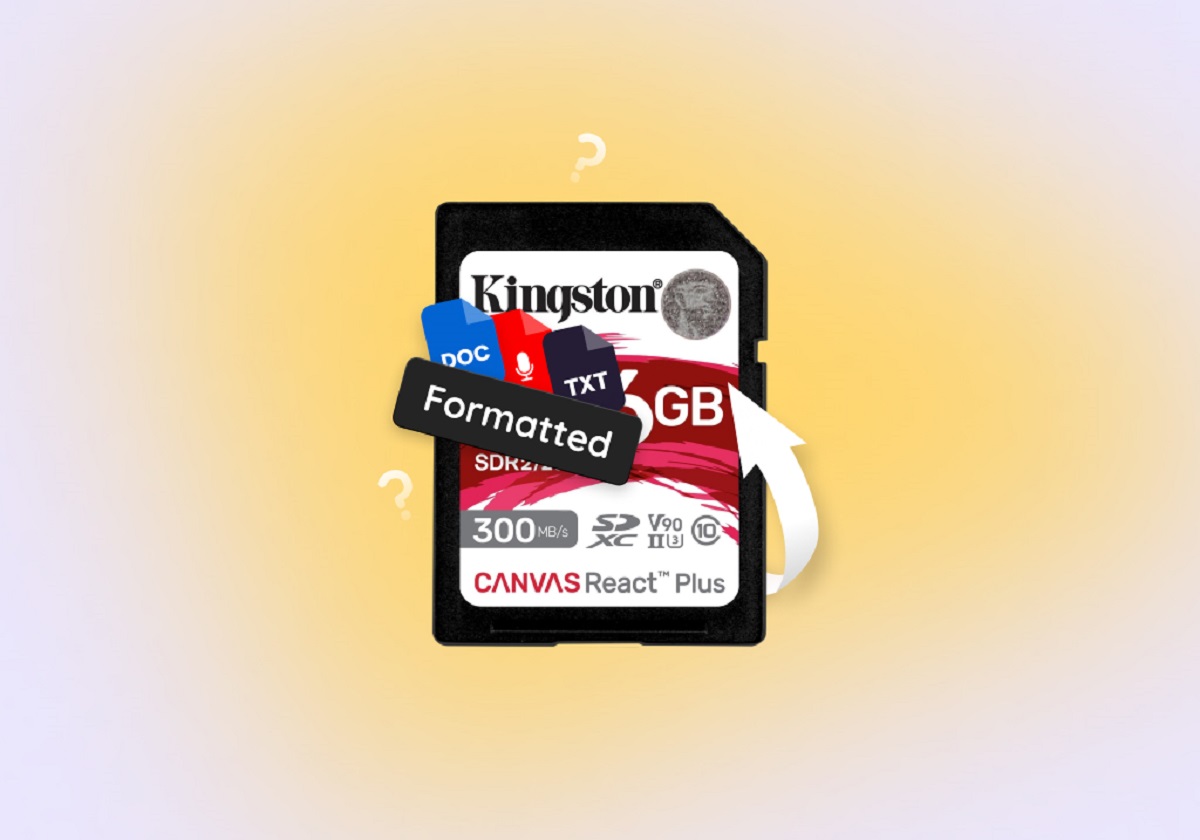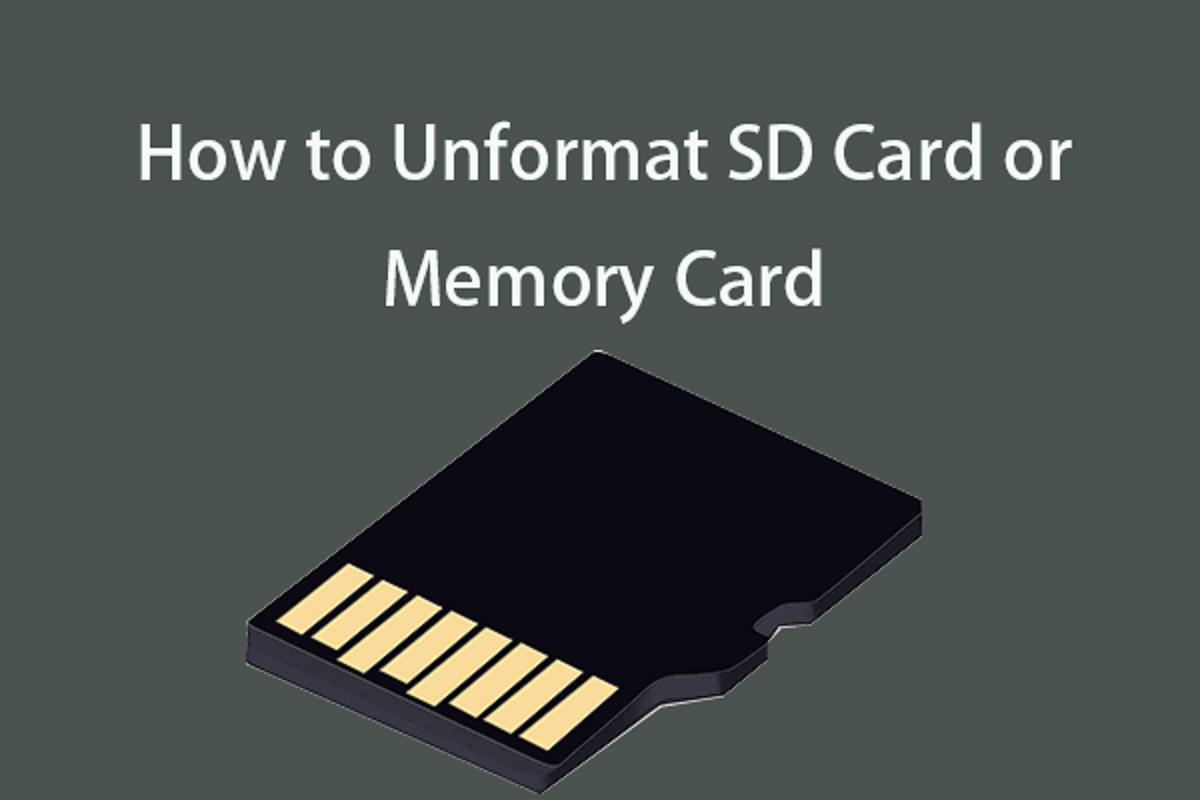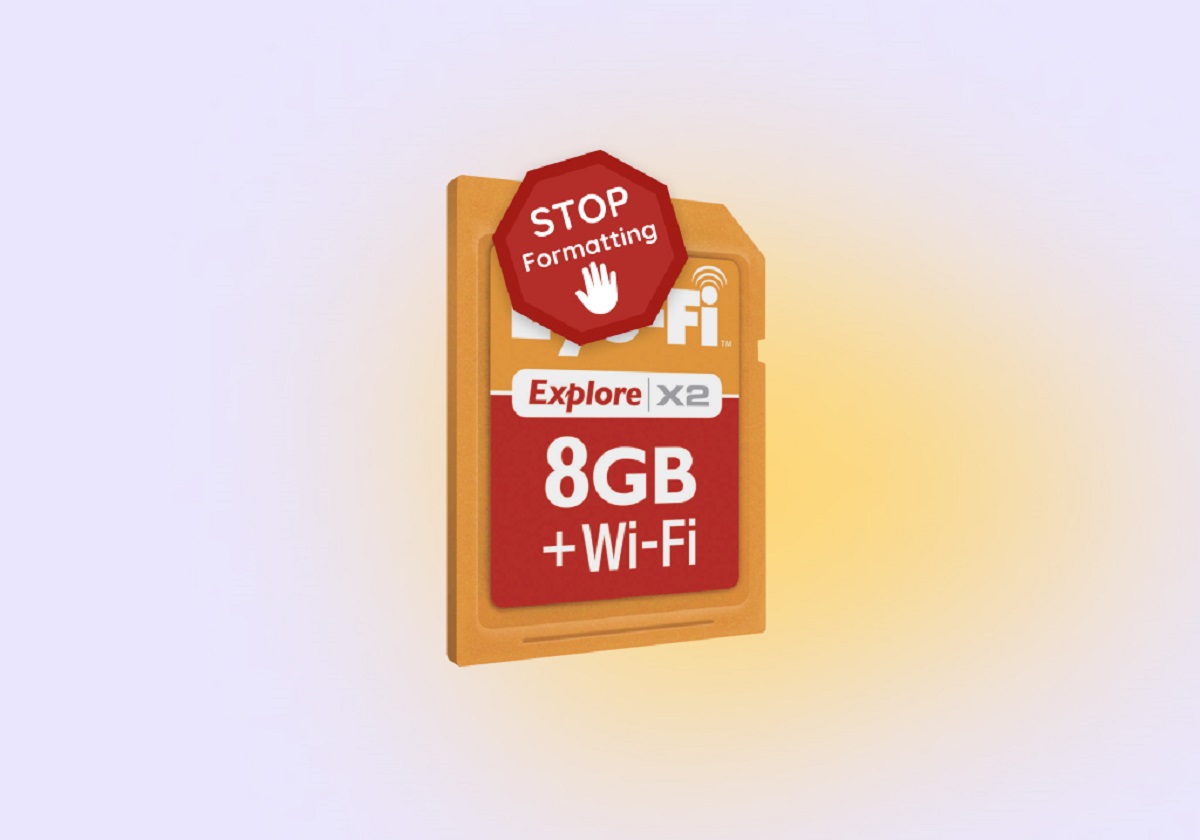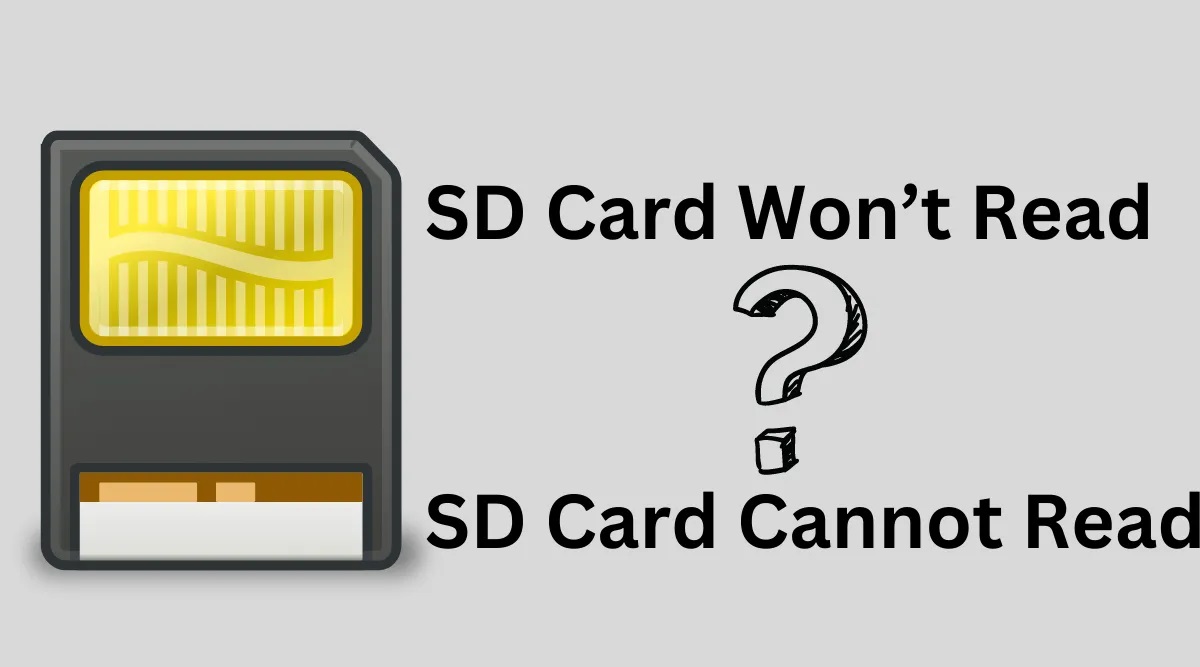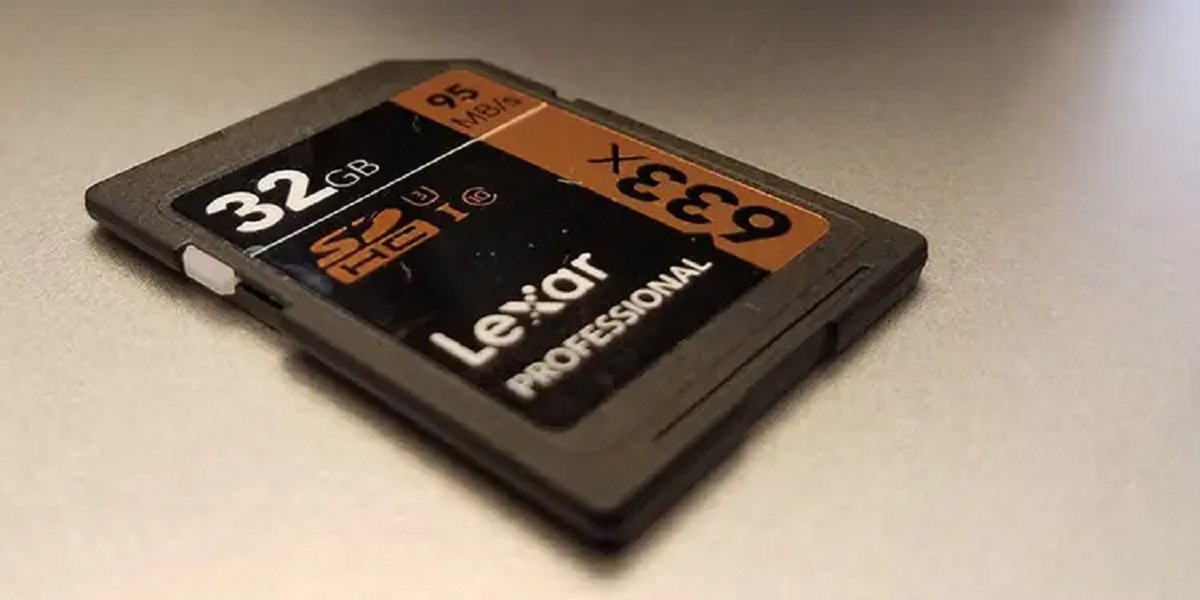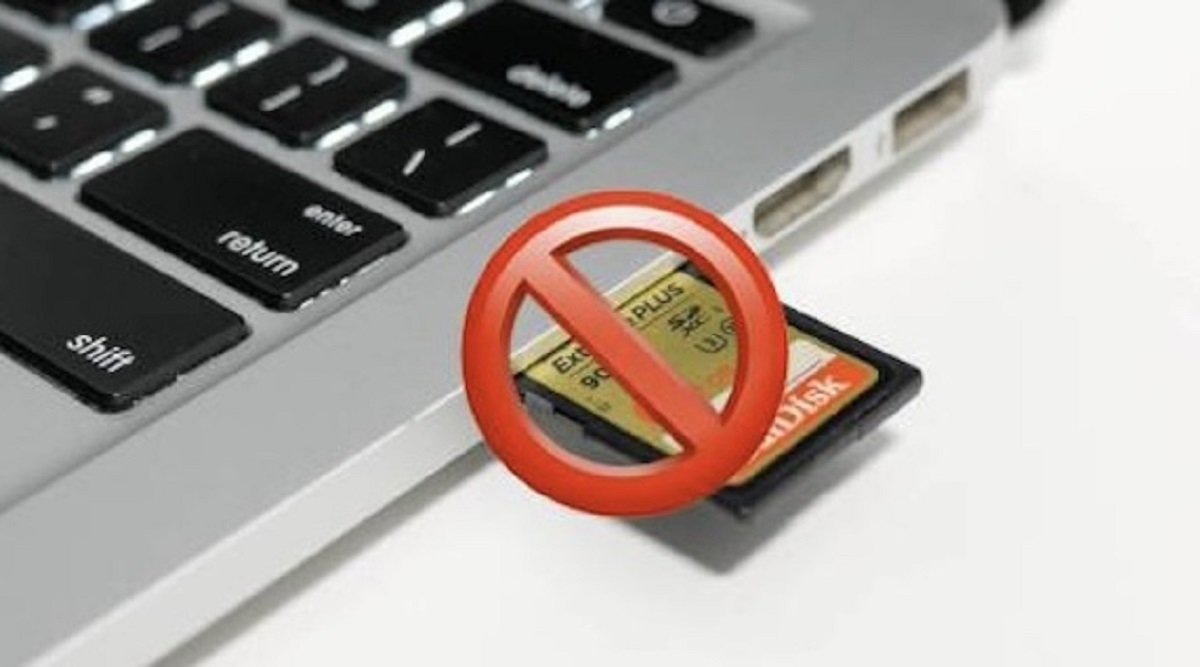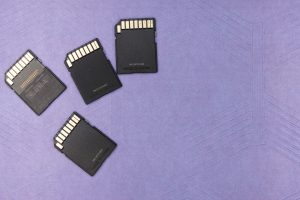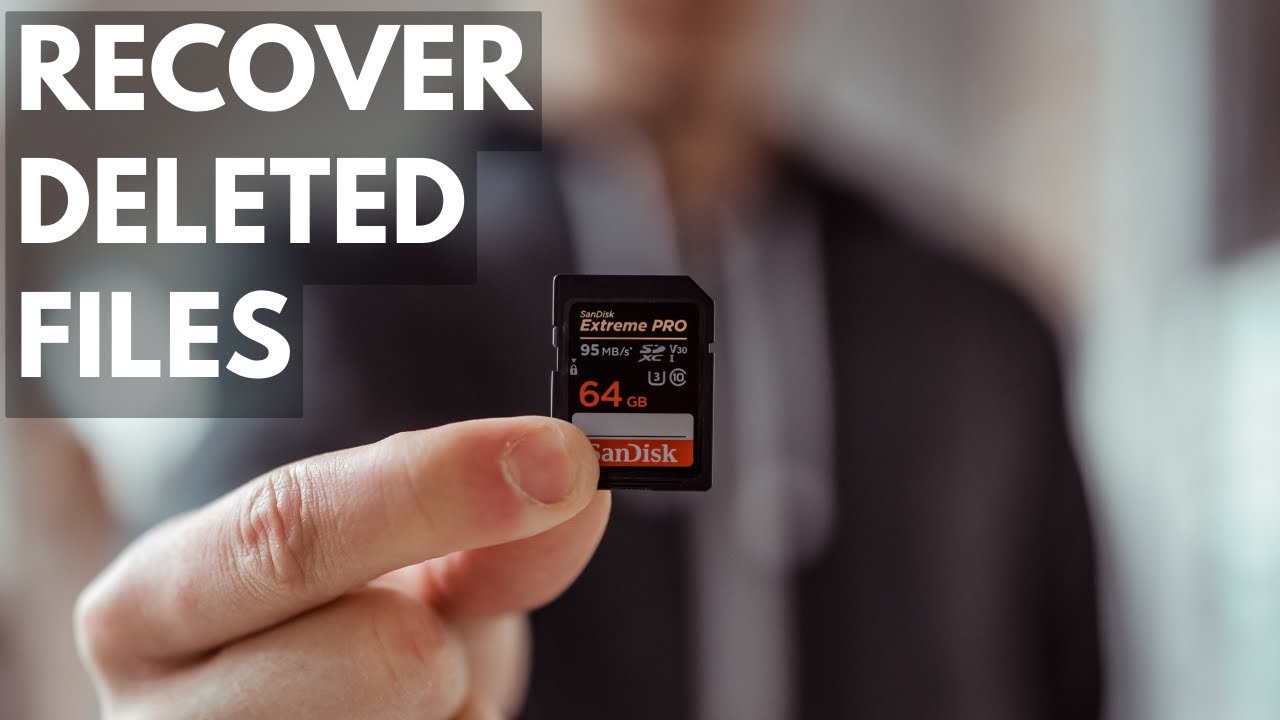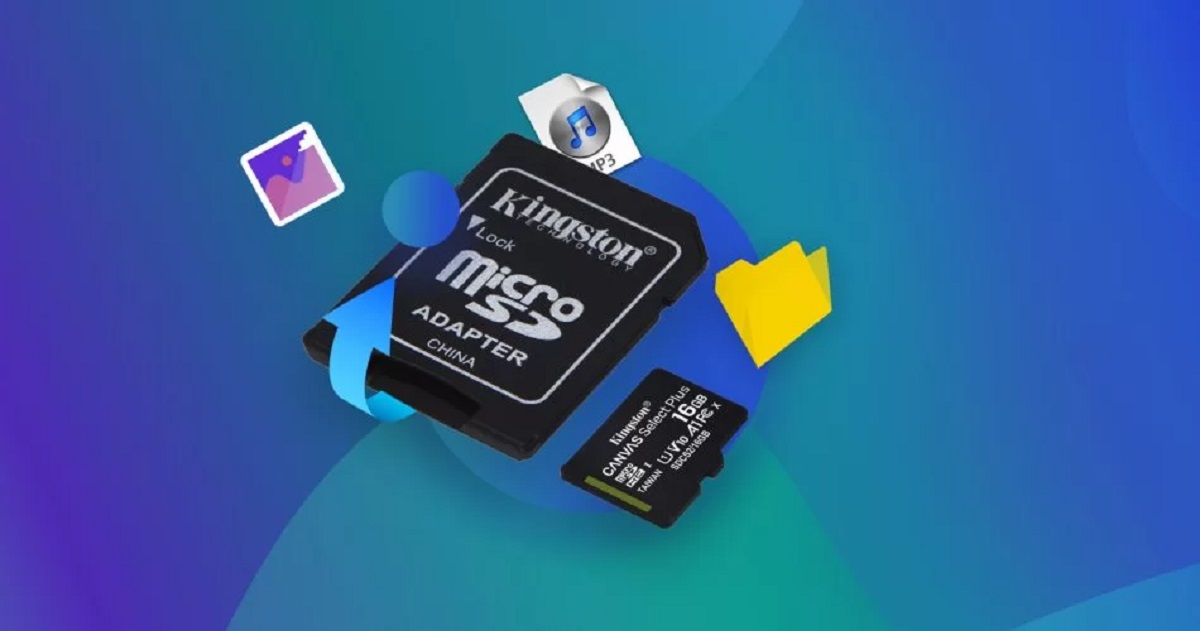Introduction
Have you accidentally formatted your SD card and lost all your precious files and photos? Don’t fret, because there’s still hope for recovering your data. In this article, we will guide you through the process of recovering a formatted SD card and provide you with some useful tips to increase your chances of successful recovery.
An SD card is a popular choice for storage in digital cameras, smartphones, tablets, and other portable devices. It offers high capacity and a convenient way to store and transfer files. However, a simple mistake like accidentally formatting the SD card can result in the loss of all your important data.
Formatting an SD card is the process of erasing all the data on it and preparing it for new files. It rebuilds the file system and removes any traces of previous files. Once formatted, all the files on the SD card become inaccessible and seemingly lost. However, the actual data is still present on the card until new files are overwritten on it.
Recovering a formatted SD card is a delicate process that requires caution and the use of specialized data recovery tools. It is important to stop using the SD card immediately after formatting to prevent further data loss. The longer you continue using the card, the higher the risk of your data being overwritten.
In the following sections, we will explore different methods you can use to recover a formatted SD card, ranging from software solutions to seeking professional assistance. We will also provide important considerations and precautions to help you protect your data in the future. So, let’s dive in and recover your lost files from a formatted SD card.
Understanding Formatting and its Impact on SD Card
Formatting an SD card is a normal procedure that prepares the card for storage and organizing files. However, when a card is formatted, all data previously stored on it is erased or marked as available space for new data. It is important to understand the impact of formatting on an SD card to grasp the recovery process.
When an SD card is formatted, the file system on the card is recreated, initializing a fresh structure to organize data. The most common file systems used for SD cards are FAT32 and exFAT. The formatting process clears the file allocation table (FAT), making it seem like all data is lost. However, the actual data remains intact on the card until it is overwritten by new files. This means that even after formatting, there is a chance to recover the lost files.
It is important to note that formatting a card does not physically wipe the data. Instead, it only marks the space as available to be overwritten. As long as the space is not overwritten with new data, the original files can still be recovered using data recovery software or other methods.
The impact of formatting on an SD card depends on the type of formatting performed. There are two main types of formatting: quick format and full format. A quick format only erases the file system data and does not actually wipe the card. It is quicker but less thorough. A full format, on the other hand, not only erases the file system but also performs a surface-level scan and checks the integrity of the card. A full format is more time-consuming but provides a more comprehensive wipe of the card.
It is important to understand that formatting does not permanently delete the data from an SD card. This knowledge is crucial when attempting to recover formatted data. If you have accidentally formatted your SD card, it is essential to cease using the card immediately to minimize the chances of overwriting the lost data.
In the next sections, we will explore various methods to recover a formatted SD card. Whether you choose to use data recovery software, command prompt tools, or professional services, understanding the impact of formatting will help you navigate through the recovery process with greater confidence and success.
Tips to Increase Chances of SD Card Recovery
Recovering data from a formatted SD card can be a complex process, but there are several tips you can follow to increase your chances of successful recovery. These tips will help safeguard your data and optimize the recovery process. Here are some key tips to keep in mind:
- Stop using the SD card: After formatting, it is crucial to immediately cease using the SD card to prevent any new data from overwriting the old files. Continued use of the card can significantly reduce the chances of successful data recovery.
- Do not attempt to format the card again: Formatting the card again will erase the already formatted data and make it more challenging to recover. Avoid any further actions that may overwrite the existing data on the card.
- Remove the SD card safely: When removing the SD card from a device or reader, always do so safely. Use the appropriate option in the operating system or device menu to safely eject the card. This minimizes the risk of data corruption or physical damage to the card.
- Use reputable data recovery software: There are various data recovery software options available online that specialize in recovering formatted SD cards. Research and choose a reputable software with positive reviews and a track record of successful recoveries. Follow the software instructions carefully to maximize your chances of recovering your lost files.
- Try different data recovery methods: If one method does not work, do not lose hope. There are multiple approaches to recover data from a formatted SD card, including using alternative software or command prompt tools. Try different methods until you find success.
- Avoid writing new data to the card: As mentioned earlier, avoid saving new files or data to the formatted SD card. Writing new data to the card increases the risk of overwriting the files you are trying to recover. Keep the card safely stored until you are ready to attempt the recovery process.
- Patience is key: Data recovery can be a time-consuming process, especially when dealing with a formatted SD card. Depending on the size of the card and the extent of the formatting, the recovery process may take a significant amount of time. Be patient and allow the software or recovery method ample time to scan and retrieve the lost data.
By following these tips, you can increase the chances of successfully recovering your data from a formatted SD card. Remember to exercise caution, use reputable tools, and avoid any actions that may jeopardize the recovery process. With persistence and the right approach, you can potentially restore your valuable files and photos.
Method 1: Using Data Recovery Software
One of the most common and effective methods to recover data from a formatted SD card is by using specialized data recovery software. These software solutions are designed to scan the SD card, locate the lost files, and restore them to their original state. Here’s a step-by-step guide on how to use data recovery software:
- Choose the right software: Research and select a reputable data recovery software that supports SD card recovery. Look for features like deep scanning, file preview, and a user-friendly interface. Some popular options include EaseUS Data Recovery Wizard, Recuva, and Disk Drill.
- Connect the SD card to your computer: Use an SD card reader to connect the formatted SD card to your computer. Ensure that the card is properly inserted and recognized by your operating system.
- Install and launch the data recovery software: Follow the software’s installation instructions and launch it on your computer. Choose the option for recovering files from an external device or removable media.
- Select the SD card: From the list of available drives or devices, select your formatted SD card as the target for the recovery process. Double-check to make sure you’ve chosen the correct drive to avoid potential data loss.
- Start the scanning process: Initiate the scanning process by clicking the appropriate button in the software. Depending on the size of the SD card and the extent of the formatting, it may take some time for the software to scan the entire card and locate the lost files.
- Preview and recover the files: Once the scanning process is complete, the software will display a list of recoverable files. Take advantage of the file preview feature to verify the integrity of the files. Select the files you wish to recover and choose a safe location on your computer for the recovered files to be saved. Avoid saving them back to the SD card to prevent overwriting.
- Perform a deep scan (optional): If the initial scan does not yield satisfactory results, some data recovery software provides an option for a deep scan. This advanced scanning method thoroughly searches for fragmented or partially overwritten files, increasing the chances of recovering more data.
- Repeat the process if necessary: If you did not find the desired files or if the recovery was incomplete, repeat the process with different software or refine your scan settings. Some software also allows you to save the scan results for later retrieval.
Using data recovery software offers a convenient and user-friendly approach to recover data from a formatted SD card. However, remember to carefully follow the instructions provided by the software and avoid writing new data to the card to maximize your chances of successful recovery.
Method 2: Using CMD to Recover Formatted SD Card
If you prefer a more hands-on approach or want to explore alternative methods, you can use the Command Prompt (CMD) utility in Windows to recover a formatted SD card. It involves running a few commands to initiate the recovery process. Here’s a step-by-step guide on how to recover a formatted SD card using CMD:
- Connect the SD card to your computer: Use an SD card reader to connect the formatted SD card to your computer. Ensure that the card is properly inserted and recognized by your operating system.
- Open Command Prompt as an administrator: To access the Command Prompt utility with administrative privileges, right-click the Start button and select “Command Prompt (Admin)” from the menu. This will open the Command Prompt window.
- Type “chkdsk” command: In the Command Prompt window, type the following command and press Enter:
chkdsk [drive letter]: /f. Replace “[drive letter]” with the assigned drive letter of your SD card. For example, if your SD card is assigned the letter “E”, the command would be:chkdsk E: /f. This command checks the file system integrity and attempts to recover any readable information from the formatted SD card. - Allow the process to complete: Depending on the size and condition of the SD card, the chkdsk process may take some time to complete. It will display the progress and any recovered files or errors it encounters during the scanning process. Be patient and let the process finish.
- Check the recovered files: Once the chkdsk process is complete, navigate to the SD card in File Explorer and check if any of the lost files have been recovered. The recovered files may be placed in a hidden folder named “Found” or “Recovered” on the SD card.
- Copy and save the recovered files: Select the recovered files and copy them to a safe location on your computer’s hard drive. Avoid saving them back to the SD card to prevent potential overwriting. Make sure to organize the files properly and double-check their integrity.
Using CMD to recover a formatted SD card offers a command-line alternative to data recovery software. However, it is important to note that this method may not guarantee the same level of success as specialized recovery software. Nonetheless, it is worth trying if you prefer a manual approach or if other methods have not provided satisfactory results.
Method 3: Seeking Professional Data Recovery Services
If you are unable to recover your formatted SD card using data recovery software or other DIY methods, or if the data stored on the card is of utmost importance and cannot be risked, it may be worthwhile to seek professional data recovery services. These services employ advanced techniques and specialized equipment to retrieve data from various storage devices, including formatted SD cards. Here’s what you need to know about seeking professional data recovery services:
- Research reputable data recovery companies: Look for experienced and reputable data recovery companies that provide services specifically for formatted SD card recovery. Read customer reviews, check their success rates, and ensure that they have a track record of handling similar cases.
- Contact the data recovery service: Reach out to the selected data recovery service and provide them with detailed information about your formatted SD card and the data loss situation. They may ask questions regarding the card’s make, model, capacity, and the circumstances of formatting.
- Deliver the SD card safely: If the data recovery company confirms their ability to recover data from your specific card, follow their instructions for securely packaging and shipping the SD card to their facility. Ensure that the card is well-protected to prevent any physical damage during transit.
- Assessment and analysis: Upon receiving your SD card, the data recovery service will perform a thorough assessment to determine the chances of successful data recovery. They may provide you with a detailed analysis report and an estimated cost for the recovery process.
- Data recovery process: If you decide to proceed with the recovery service, they will initiate the data recovery process, utilizing their expertise and specialized equipment. This may involve techniques like chip-off recovery, where the memory chips are directly accessed and the data is extracted from them.
- Check the recovered files: Once the data recovery process is complete, the professional service will provide you with the recovered files in a secure manner. Take the time to carefully review and verify the integrity of the recovered data. If any files are missing or corrupted, inform the service immediately.
- Pay attention to confidentiality: Reputable data recovery services prioritize the confidentiality and security of your data. They should have measures in place to protect your privacy and ensure that your recovered files are not leaked or accessed by unauthorized individuals.
- Cost and turnaround time: Professional data recovery services can be costly, and the price may vary depending on factors like the complexity of recovery, the size of the SD card, and the urgency of the request. Additionally, the turnaround time can vary, ranging from a few days to several weeks, depending on the service provider and their workload.
While seeking professional data recovery services may be more expensive than other methods, they often provide the highest chances of successful recovery, especially for complex cases or highly valuable data. Consider this option if the data on your formatted SD card is irreplaceable or of critical importance.
Method 4: Attempting DIY SD Card Recovery
If you are comfortable with technical processes and want to explore cost-effective alternatives, you can attempt DIY (Do-It-Yourself) SD card recovery methods. These methods involve using various tools and techniques to recover data from a formatted SD card. Here are some DIY steps you can take to recover your SD card:
- Stop using the SD card: As with any data recovery method, it is crucial to immediately stop using the formatted SD card to prevent further data loss. Continuing to use the card may overwrite the deleted files and decrease the chances of successful recovery.
- Use different file recovery software: Explore different free and paid data recovery software options available online. Some popular choices include PhotoRec, TestDisk, and Recuva. Install the software on your computer and carefully follow the instructions provided. Remember to select the appropriate drive, in this case, the formatted SD card, for scanning and recovery.
- Consider photo-specific recovery tools: If your main concern is recovering lost photos, specialized photo recovery software may be more suitable. These tools are specifically designed to recover image files from various storage devices. Look for reliable options like Disk Drill or Stellar Photo Recovery that offer photo-specific recovery capabilities.
- Attempt manual file recovery: If the software options do not yield satisfactory results, you can try manually searching for and recovering specific file types. Use the search function in your operating system’s file explorer to search for specific file extensions (e.g., .jpg for images, .docx for documents). This way, you can identify and manually copy recovered files to a safe location on your computer.
- Consider SD card repair tools: In some cases, formatting errors or file system corruption can be rectified using specialized SD card repair tools. These tools can help rebuild the file system structure and potentially recover lost files. Examples of such tools include DiskGenius and SD Formatter. However, use these tools with caution and follow their instructions carefully.
- Use disk imaging software: Disk imaging software creates a sector-by-sector copy of an entire storage device, including the formatted SD card. This can be useful as a backup for potential recovery attempts in case any future data loss occurs during the recovery process. Tools like ddrescue and FTK Imager are commonly used for creating disk images.
- Consult online forums and communities: Engage with online forums, communities, and discussion boards dedicated to data recovery. These platforms provide a wealth of knowledge and insights from experienced users who have successfully recovered data from formatted SD cards. Ask for advice, share your situation, and learn from the experiences of others.
- Know when to seek professional help: DIY methods can be effective for straightforward data recovery cases, but they may not always yield the desired results, especially for complex scenarios. If you have exhausted all DIY options and the data on your formatted SD card is of utmost importance, consider seeking professional data recovery services for the best chances of successfully recovering your data.
Attempting DIY SD card recovery methods can be a cost-effective approach for tech-savvy individuals. However, it requires careful attention to detail, patience, and a willingness to try multiple methods. Remember to always handle your SD card with care and avoid any actions that may further damage it during the recovery process.
Important Considerations During SD Card Recovery
When attempting to recover data from a formatted SD card, there are several important considerations to keep in mind. These considerations will help ensure a smoother and more successful recovery process. Here are some key points to consider:
- Minimize further data loss: To increase the chances of recovering your data, it is crucial to stop using the SD card immediately after formatting. Continuing to use the card can overwrite the deleted files and make them permanently unrecoverable. Safely remove the card from the device and set it aside until you are ready to begin the recovery process.
- Choose the right recovery method: Depending on your comfort level and the complexity of the data loss situation, it’s important to choose the appropriate recovery method. Consider factors like the type and severity of formatting, the value of the lost data, and your technical skills. Software-based solutions and DIY methods are sufficient for most cases, while professional data recovery services may be necessary for more complex scenarios.
- Backup and restore: As part of the recovery process, it is advisable to create a backup of the recovered files in a separate location. This serves as an additional safeguard in case any issues arise during the recovery or if any new data loss occurs. Keep a copy of the recovered files on your computer’s hard drive or an external storage device.
- Patience and multiple attempts: Data recovery can be a time-consuming process, and success is not always immediate. In some cases, multiple attempts or different recovery methods may be required. Be patient and persistent, and don’t lose hope if the initial attempts do not yield the desired results. Keep trying various methods until you achieve a successful recovery.
- Protect the recovered files: Once you successfully recover your data, take immediate measures to protect and secure the recovered files. Make sure to store them in a safe and organized manner, preferably on a different storage device or backup medium. Consider implementing regular backup practices to prevent future data loss incidents.
- Seek professional assistance when necessary: If the data on the SD card is highly valuable, irreplaceable, or if you’re unsure about handling the recovery process yourself, it is advisable to seek professional data recovery services. Professionals have the expertise, tools, and resources to handle complex recovery cases and provide the best chances of successful data retrieval.
- Prevention for the future: To avoid accidental formatting or data loss in the future, make it a habit to regularly back up your data to a secure location. Use caution when handling your SD card and always safely eject it from devices. Consider using write-protect switches or protective cases for your SD card to minimize the risk of accidental formatting or physical damage.
By considering these factors during SD card recovery, you can enhance your chances of successful data retrieval and take steps to prevent similar incidents in the future. Remember to exercise patience, take necessary precautions, and seek professional assistance when needed to ensure the best outcome.
Additional Precautions to Protect Data in the Future
While recovering data from a formatted SD card is possible, it is always better to take precautionary measures to protect your data from loss or damage in the first place. Here are some additional precautions you can take to safeguard your data and avoid future data loss incidents:
- Regularly back up your data: Make it a habit to back up your important files regularly. Create backups on external hard drives, cloud storage services, or reliable online backup solutions. This ensures that even if your SD card gets formatted or damaged, you will still have a copy of your valuable data.
- Use reliable SD cards: Invest in high-quality, reliable SD cards from reputable brands. These cards are less likely to encounter issues such as formatting errors or physical damage. Avoid purchasing SD cards from unknown or unreliable sources, as they may not meet the necessary performance and reliability standards.
- Handle cards with care: Treat your SD cards with caution. Avoid bending, dropping, or exposing them to extreme temperatures or moisture. Use protective cases or sleeves to safeguard them when not in use. Proper handling will minimize the risk of physical damage and extend the lifespan of your SD cards.
- Keep cards away from magnets: Magnets can negatively impact the data stored on your SD card. Avoid placing your cards near strong magnetic fields, such as speakers, magnetic phone cases, or magnetic closures on bags. Magnetic interference can corrupt or erase the data on the card.
- Eject SD cards safely: When removing an SD card from a device, always follow the proper procedure to safely eject it. This ensures that any ongoing read/write operations are completed before removal, reducing the chances of data corruption. Use the “Safely Remove Hardware” option on your computer or the device’s built-in eject functionality.
- Scan for viruses and malware: Regularly scan your SD cards, especially if you use them on multiple devices or share them with others. Viruses and malware can corrupt files on the card or make them inaccessible. Use reliable antivirus software to ensure that your SD card and its contents remain secure.
- Label and organize your cards: Keep track of your SD cards by labeling them with relevant information like the capacity or usage purpose. This will help you identify and differentiate between cards, giving you a better overview of your data storage. Additionally, organize your files in a structured manner to easily locate and manage data.
- Regularly check and update firmware: Firmware updates provided by the SD card manufacturer can fix potential bugs and security vulnerabilities. Periodically check for firmware updates and apply them as recommended. Keeping your SD card’s firmware up to date can improve performance, stability, and compatibility with different devices.
By implementing these additional precautions, you can significantly reduce the risk of data loss or damage to your SD cards. Being proactive in safeguarding your data helps ensure the longevity and accessibility of your important files, giving you peace of mind.
Conclusion
Accidentally formatting an SD card can be a distressing experience, but with the right approach, there is still a chance to recover your lost data. Whether you choose to use data recovery software, Command Prompt tools, DIY methods, or professional services, each method offers its own advantages and considerations. By understanding the impact of formatting and following the tips provided, you can increase your chances of successful data recovery.
Remember to stop using the SD card immediately after formatting to prevent further data loss. Choose the appropriate recovery method based on your comfort level and the complexity of the data loss situation. Opting for professional data recovery services may be necessary for more critical cases or when valuable data is at stake.
Throughout the recovery process, exercise patience, take necessary precautions, and backup your recovered data. Prevention is key to protecting your data in the future, so regularly back up your files, handle your SD cards with care, and keep them away from magnets. Implementing these additional precautions will minimize the risk of data loss and ensure the safety of your valuable files.
While there is no guarantee of 100% data recovery, following the steps and considerations outlined in this guide will provide you with the best possible chance of recovering your lost files from a formatted SD card. Remember to remain calm and focused during the recovery process, keeping in mind that every situation is unique and the outcome may vary.
Ultimately, the recovery process requires a combination of technical knowledge, perseverance, and sometimes professional assistance. By applying the suggested methods and approaches, you can increase your chances of successfully recovering your data from a formatted SD card and safeguarding it against future incidents.







